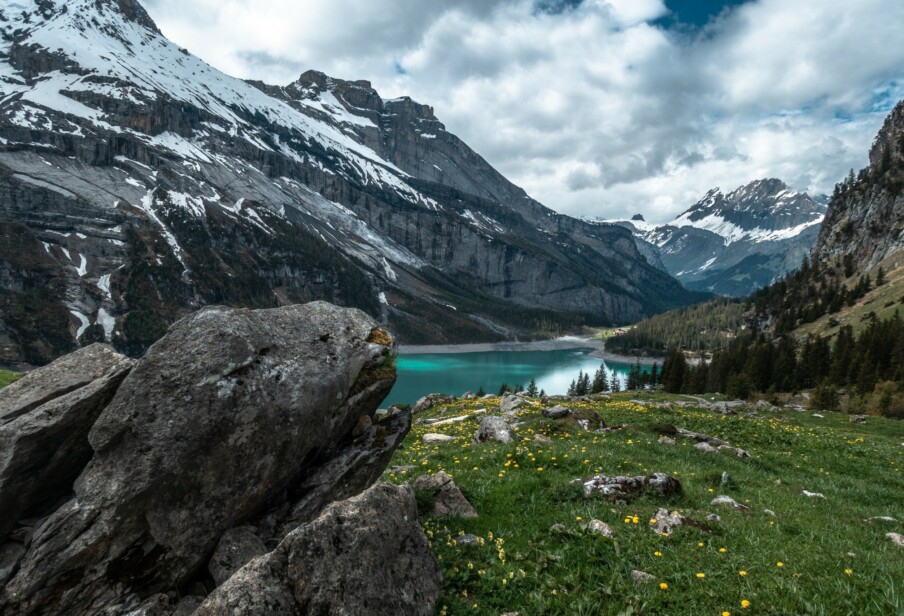
Another great article from Tapela Lungu, our trainee (February-April 2019) from Zambia.
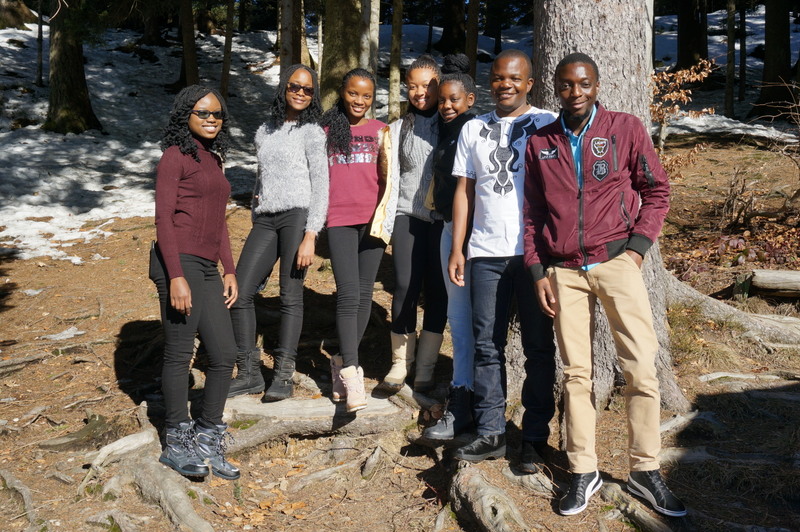
Everyone keeps saying how important it is to travel but not a lot of people can tell you about the benefits and why it is important to travel. The benefits of travelling are not just a one-time thing: travelling changes you physically and psychologically. Having little time or money isn’t a valid excuse. You can fly, walk, run and even sail at your own cost depending on your destination and your mission to that destination. Traveling Improves Your health from cutting down on stress, to lowering your chances of getting affected by unnecessary ailments.
For some people, wandering abroad is a cure for depression and anxiety. Of course, it’s not a foolproof cure, but it might help you feel better, both physically and psychologically.
Travelling more is likely to have a tremendous impact on your mental well-being, especially if you’re are not used to going out of your comfort zone. Traveling also makes you smarter because you used to pick up new words in a different language every time you travel and you will see improvements in your brain capacities, as Dan Roitman wrote in the Huffington Post. It also Improves your understanding of Other Cultures.
Being more understanding and tolerant about a culture different than ours is part of being smarter, but I consider it as a benefit of travelling.
In the first few scripts of my travelogue this year, I had an opportunity to travel to Switzerland, a European nation beautified by the Alps mountain that shines their peaks and brows of ice on the marvelous aged and modern infrastructures that are embedded in it.
Switzerland is beautiful, not just from the mountains or cultural structures, but from all the physical and natural endowments the country has. I had an opportunity to explore some of the magnificent structures and sites of the country and this little piece I hope with consideration, might just add a milestone to your geography and history’s mental archive.
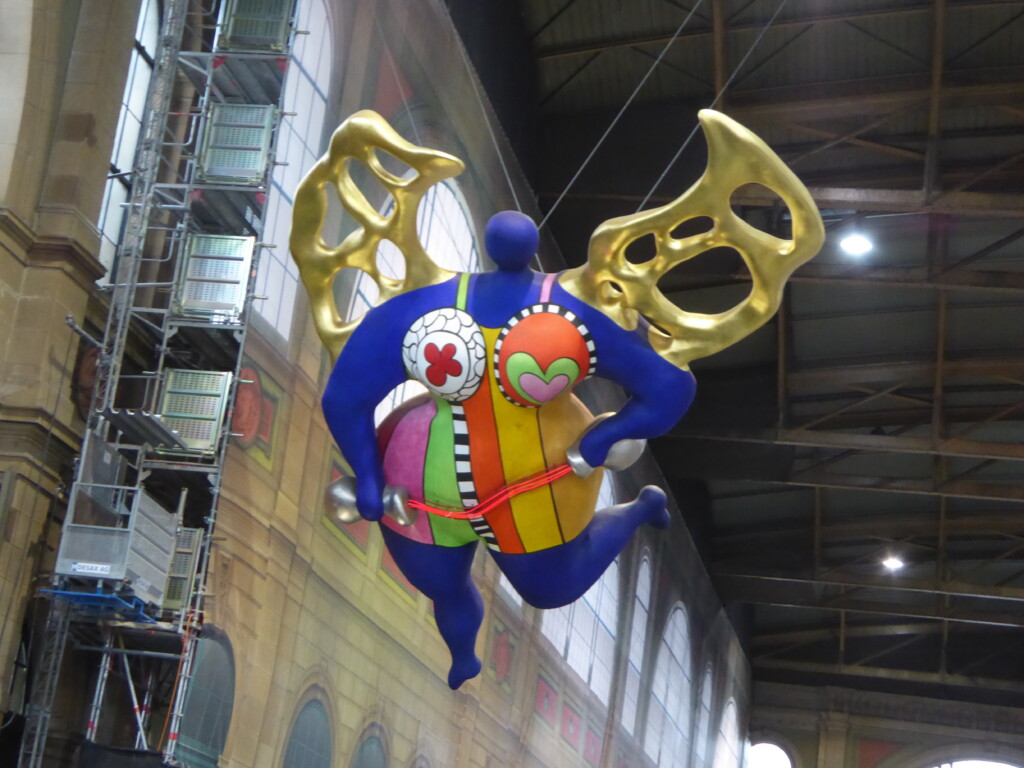
The Guardian angel
The Guardian Angel by the French-American painter and sculptor Niki de St. Phalle in the large hall in Zurich’s main station was a gift from the artist on the station’s 150th anniversary. It was designed by her and her husband Jean Tinguely. The work is 11 meters high and weighs 1.2 tons. It represents a well-rounded woman with golden wings, clothed in a kind of multi-colored costume. The angel has been hovering high above the heads of the travelers since 1997 and watching over them day and night. I asked so many Swiss people why it was designed in the manner it was and some in ridicule established that it was also not common to see a “big fat angel.” However, the guardian angel was designed in the style of the colorful, voluminous “nana” figures for which the artist was world famous for. They stand for joyful, liberated, self-confident women. Initially ridiculed by fellow artists, Niki de Saint Phalle’s works are now one of the most popular works of contemporary art. One of her most famous works is the Stravinsky Fountain in Paris in front of the Pompidou Centre and which was started in 1982. I really like this “big fat angel».
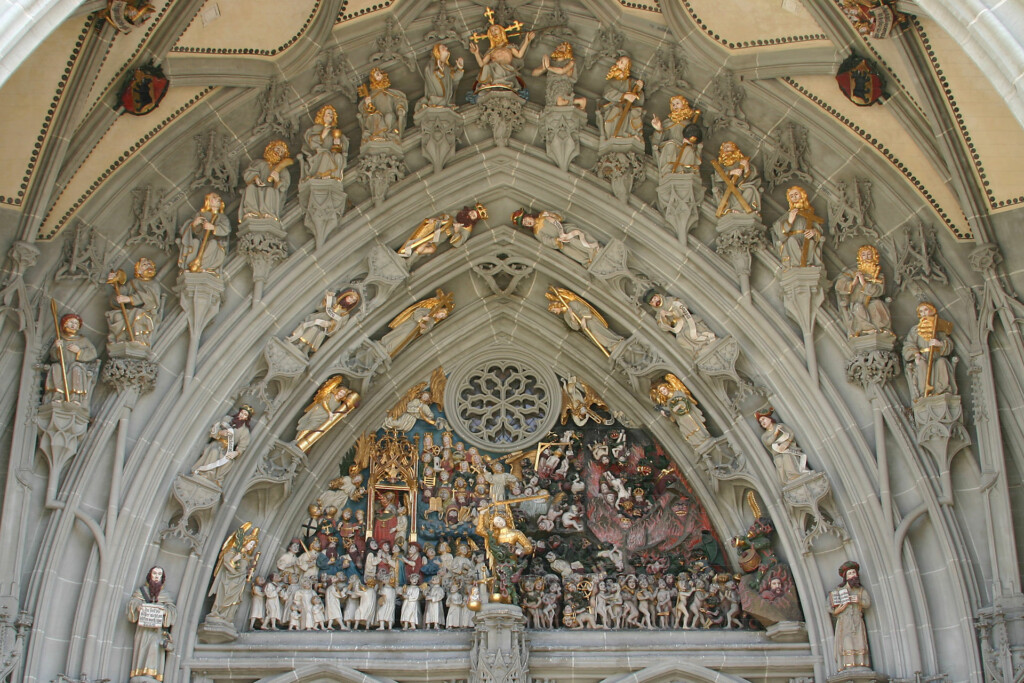
Last judgement portal
The Bern Minster is a Swiss Reformed cathedral, (or minster) in the old city of Bern, Switzerland. Built in the Gothic style, its construction started in 1421. On the photo there are Details of the Last Judgement- sculptures over the main entrance. There are about 217 figures on the portal depicting the last judgement day some being the parable of the Wise and the Foolish Maidens which follows an old tradition observable on the main entrances of many Romanesque and Gothic churches. What amazes me is how somebody could sit down and come up with such a marvelous concept, blend it, tell a story out of it and implement such a glowing sight. It is just phenomenal.
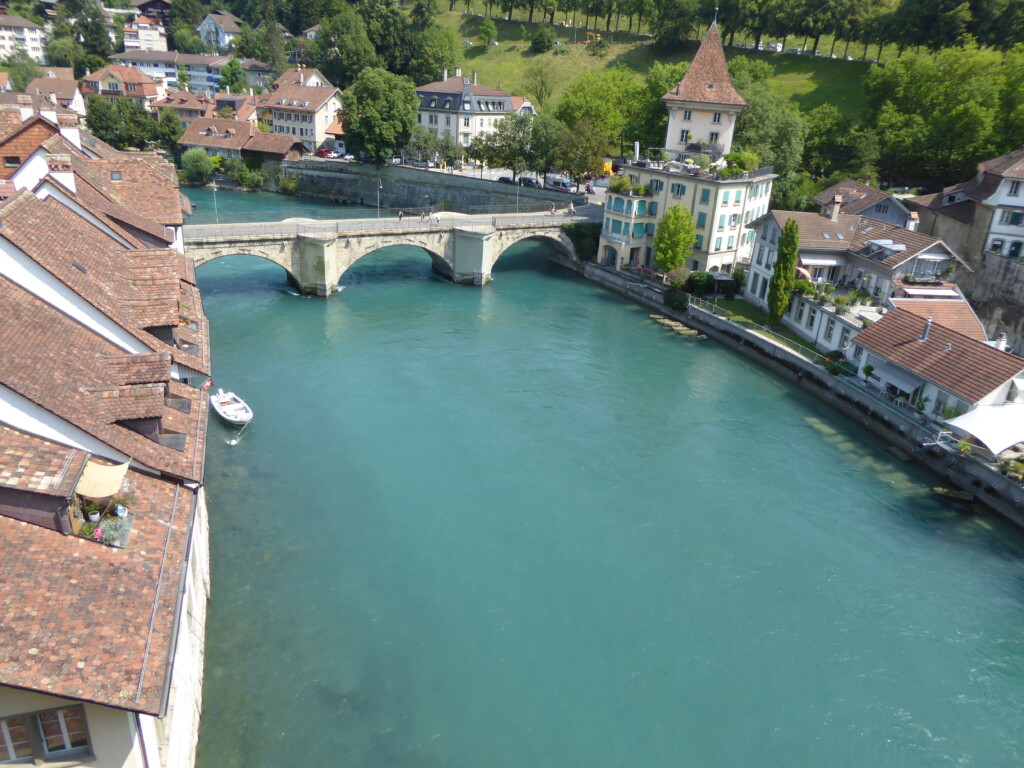
The Aare river
The Aare river flows around three sides of the city of Bern. With its crystal-clear turquoise water – in which hundreds of swimmers splash about in the summer – it shapes the city’s life and characterizes the picturesque cityscape of the Old Town of Bern, a UNESCO World Heritage Site. Extending 288 kilometers, the Aare is the longest river flowing entirely within Switzerland. The Aare river has a special meaning in the Swiss capital, Bern. The Bernese have a special love for “their” river. And they treat it with the same tenderness with which the renowned Aare Loop flows around the city. The Aare is their pride and joy, and the center of daily life. In the Middle Ages when the city of Bern was spread only on the lower part of the peninsula, the Aare provided great protection from foreign armies on three sides of the city. It wasn’t until the construction of the first high bridges in the 19th century that there were multiple ways to access the city. The blue and almost flawless flow of the river amazed my gaze and it is one of those sites where one could sit in the sun and just enjoy the view and have a splash or swim in the water. The turquoise blue water colour is just adorable to utilize.
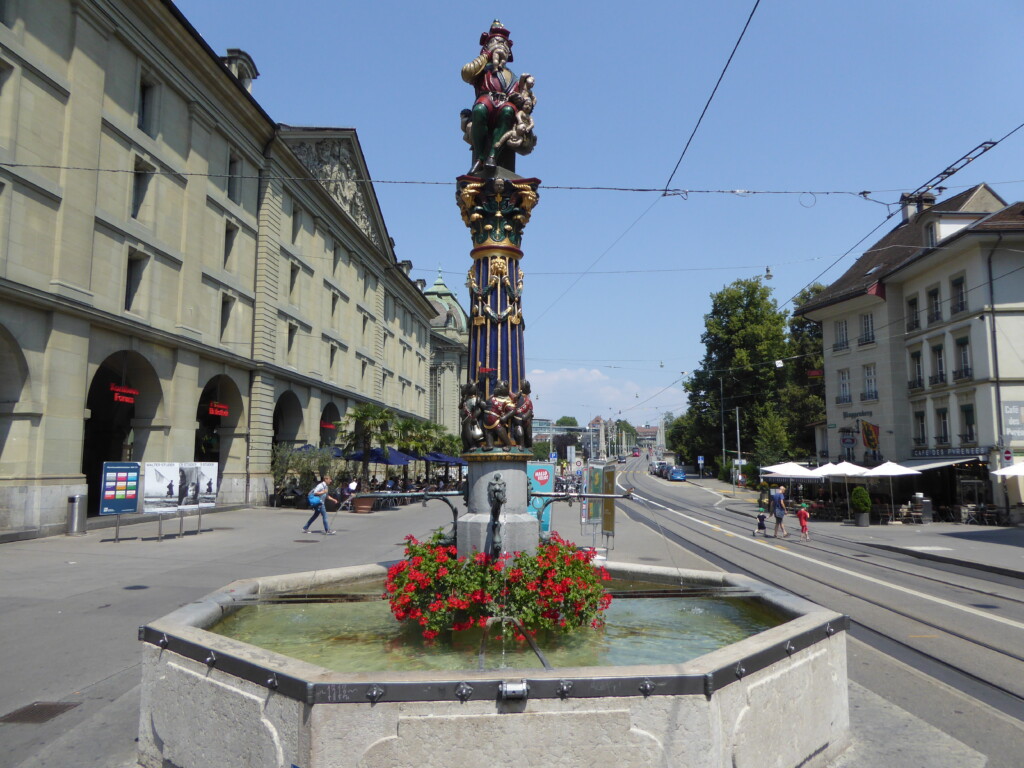
Ogre fountain
A nearly 500-year-old sculpture depicts a man eating a sack of babies, and no one is sure why. The fountain sculpture towers above the ground, a baby half stuffed into the giant’s mouth, and a sack full of three alarmed tots slung over his shoulder presumably for later snacking. The unsettling sculpture is no modern work of art; built in 1546, it is one of the oldest fountains in the city of Bern. Strangely, no one is exactly sure why it’s there. The creep that covered my mind when I first saw it got me wondering. How do you design something like this creepy and what story are you trying to establish out of this? Alas then I discovered that they were three main theories to it. The first and most unfortunate possibility is that the Kindlifresser was built as a sort of warning to the Jewish community of Bern. The Kindlifresser wears a hat that is strikingly like the yellow pointed Judenhut that Jews were forced to wear at that time. The second theory is that the terrifying Ogre is a depiction of Kronos, the Greek Titan. Kronos has arguably one of the most disturbing tales in Greek Mythology. Long story short, Kronos eats all his god children to keep them from taking over his throne. The final theory is that the Kindlifresser is supposed to be the older brother of Duke Berchtold, the founder of Bern. Apparently, the jealousy of being overshadowed by his younger brother for so many years caused him to go mad, eventually sending him into a rage where he collected and ate the town’s children. (It would seem likely that this event would have been recorded in the towns history books, which it is not.) It may of course be none of the above and is simply a sort of boogie man from Switzerland’s Fastnacht, or” Night of Fasting” festival, a way to remind the Children of Bern to behave. Whatever the Kindlifresser represents, it has terrified Swiss children for nearly 500 years, and hopefully, will be there to terrify them for 500 years. Creepy but interesting for me. Whatever the real story is, I still find the fountain rather intriguing.
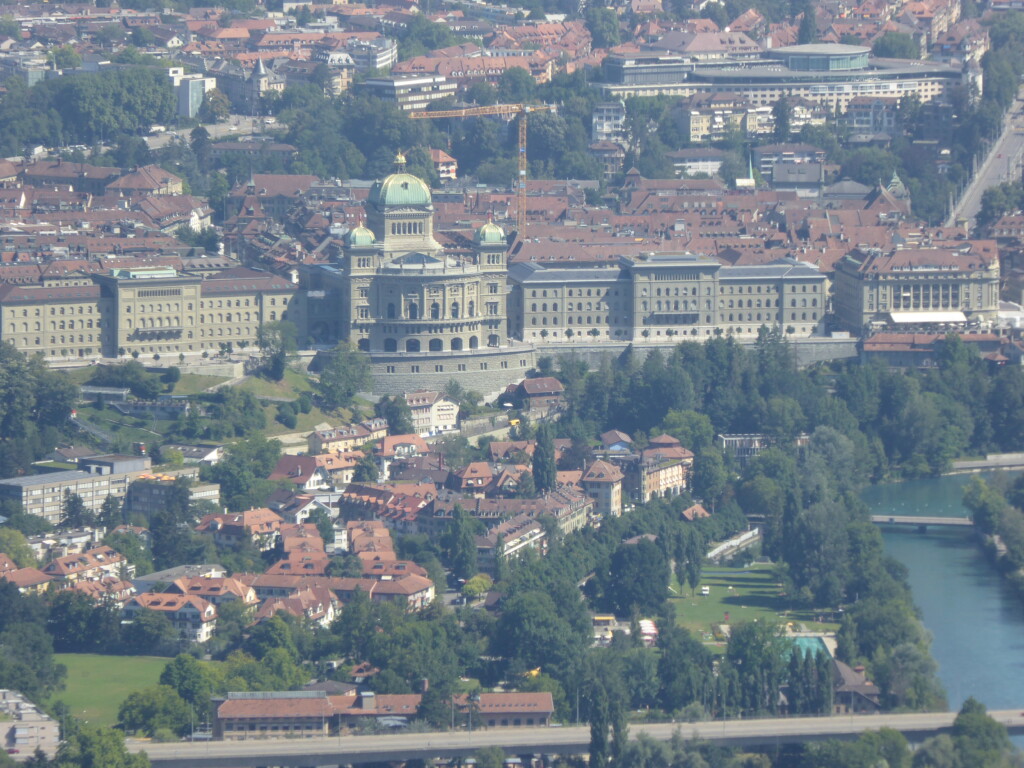
Parliament building in Bern
The Parliament Building houses the Swiss Parliament. The Swiss federal government has its headquarters in this impressive structure where the National Council and Council of States convene for regular sessions four times a year. After Bern was declared the Swiss capital in 1848, a new building had to be constructed for its parliament. The construction of today’s west wing began in 1852. The east wing was added in 1884 – a mirror image of the west wing. The imposing center section with its dome and golden ribbing was completed in 1902. The dome is clad in copper and had a reddish hue in the time right after its completion. Over time, the turquoise patina developed that is typical of aged copper. The decorations in and on the Parliament, Building were the work of a total of 38 artists from all over the country. The Parliament Square was inaugurated on July 31 and August 1, 2004 (Swiss National Day). The square now serves as a gathering place for young and old, rather than providing parking spaces for cars as it used to. It also hosts the traditional weekly market. I like the view of the building from up on top. I also like the city for one particularly thing, it is easy going than most cities I have been to in Switzerland. Bern people are more friendly. Thought a bit more relaxed than the people of Zurich, they are cheery and very accommodating.
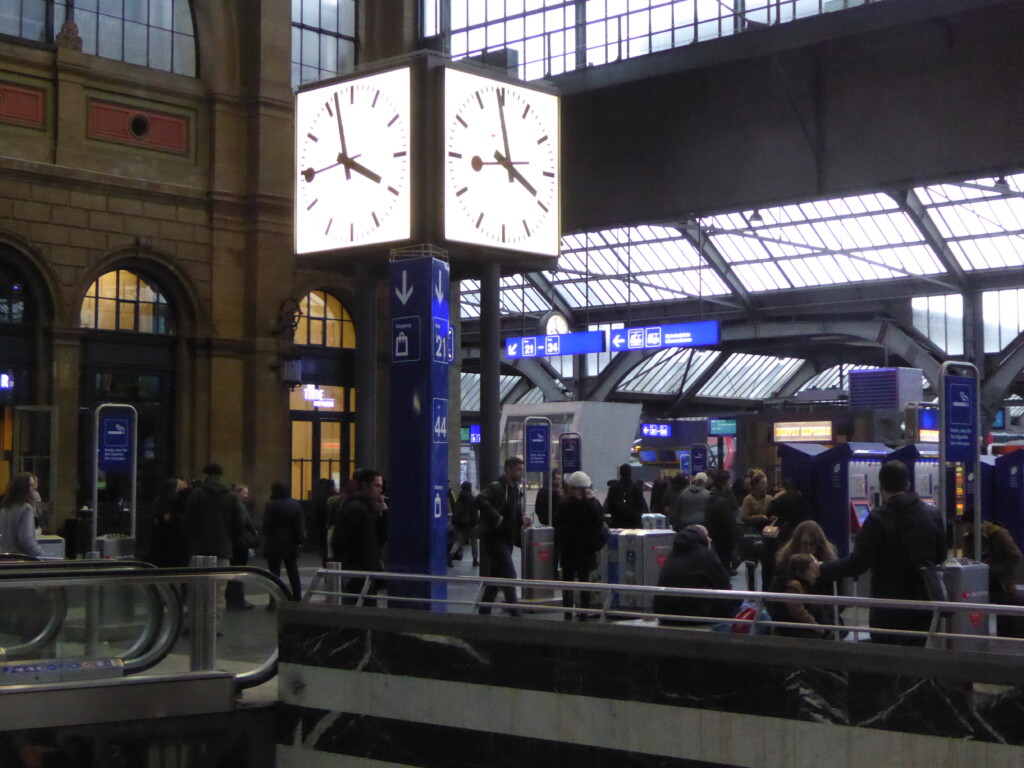
The meeting point at Zurich HB
The meeting is the one of the most famous locations in Zurich. It is basically a site or place where most people link up or meet. It is noticeable because of its height and labels on it depicting the meeting point. In Zambia we have the Chicken Hybrid Statue location which often described as “Pachi Nkuku” by the locals. I took this site as one of my favorites as it is not so common to travel and have cultural similarities from that of your own. Pachi Nkuku and The Meeting Point are in the same WhatsApp group.
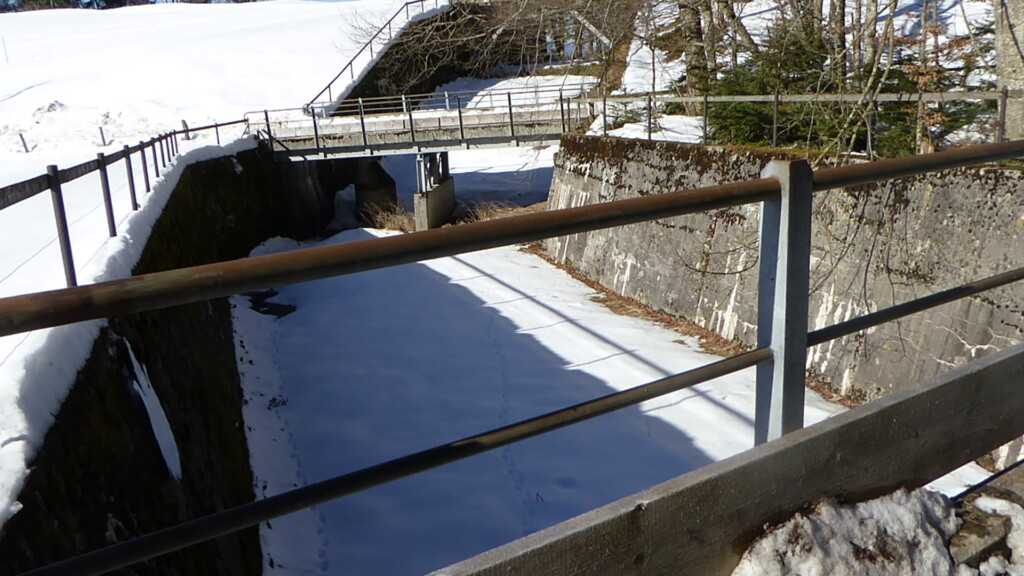
Switzerland’s world war bridges
Switzerland is one of the fewest lucky countries not to have gone through the world war. They built trenches and bridges across the country to prevent enemies from invading the country. Books on the First World War traditionally say that by the end of 1914, «there was a line of trenches stretching from the North Sea to the Swiss frontier». That is usually the extent to which Switzerland’s part in the First World War is considered. Swiss people may not have died in their thousands in the heavy fighting that was taking place not far over the border, but the years between 1914 and 1918 were still a time of great change for them as they put up massive infrastructure that made the country ready at all costs if at all war was going to breakout. It aligns the statement of Swiss people being organized. Does this matter? Surely being neutral – as Switzerland was throughout the conflict – means you’re not involved in a war? In fact, Switzerland could not escape the effects of the First World War. For me this history is so rich, and it sums up the notion that they are actually really organized. I mean preparing for war when you are not even in one?
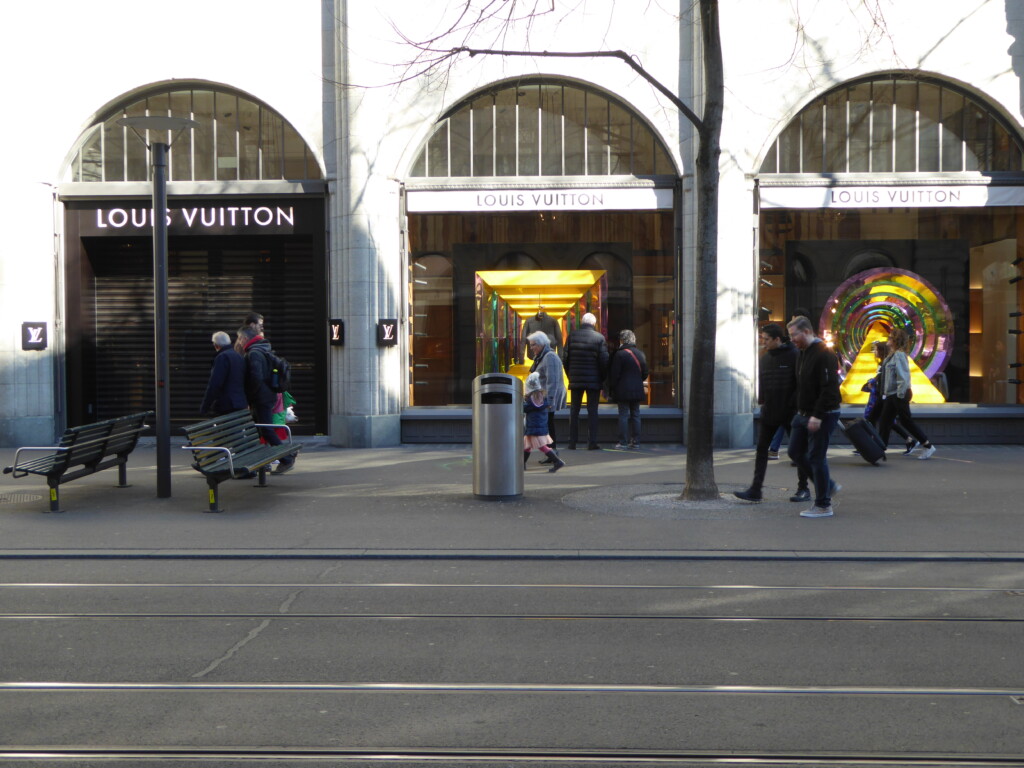
Brand shops
Switzerland is one of the richest countries in the world and one of the best countries to do your luxurious shopping. Bahnhofstrasse – Zurich’s Shopping Boulevard. You can find everything that your heart desires in Bahnhofstrasse: fashion, art and Zurich specialties attract residents as well as visitors. The Boulevard has big fashion brands such as Louis Vuitton, Gucci, Rolex, Versace, Ferragamo and many others. The world-renowned shopping boulevard was created after construction of Zurich’s Main Railway Station. At the spot where city moats were 150 years ago, today it connects Lake Zurich with the Main Railway Station on a length of 1.4 kilometers (0.87 miles). You find numerous boutiques, department stores and timepiece stores here, as well as at Paradeplatz – the Swiss banking center. Bahnhofstrasse is just as popular with locals and visitors, and it is always worth a visit. You can stroll relaxed along the lake in the summer as well as enjoy mulled wine or hot chocolate at every corner in the winter. Rennweg and Augustinergasse lead off from Bahnhofstrasse into the picturesque old town. I had an opportunity to see one of the stores and one funny thing should I say is that the prominent shops have a guard in a black suit opening and closing the store. It seemed fancy but it rather looked funny to me because who would robe a store in one of the world’s most secure nations? And the same time, t made shoppers who went in and out of the store some sense of prestige and class because they knew they were safe at almost all cost. Anyway, who knows. All in all, it is truly a glamorous boulevard and out of my silly curiosity I had to shop from one of the stores(H&M) which is also one Europe’s leading clothing brands and I must say it was affordable but expensive to shop from there if I were home.
That is just the magic thing about traveling. It gives you numerous emotions, sights, expressions and adventure. It is a wonderful gift. It really is, and as we travel and experience more of the world and life, we often become overwhelmed with gratitude and appreciation for all the beautiful moments we enjoyed and the people we’ve shared them with. That was the little insight of the beautiful Alps region of Switzerland.